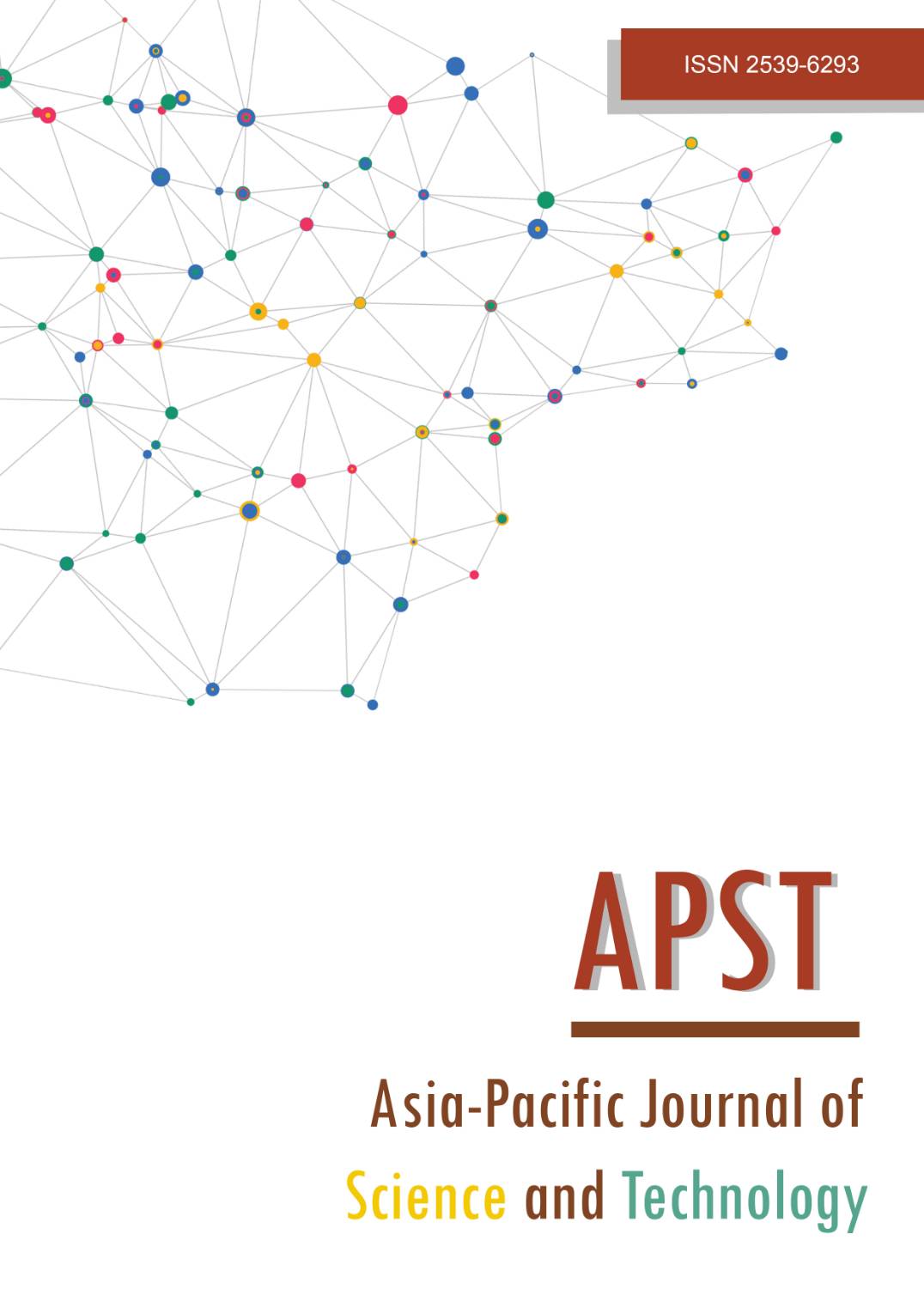Simulation and optimization model for a cross-docking distribution center: case study of a railway business
Main Article Content
Abstract
One of the various issues experienced in execution of manufacturing systems in supply chain management is the bottleneck. Bottlenecks frequently occur during operation of real systems. Railway businesses encounter the same issue. In this research, simulation models were developed to explore and eliminate bottlenecks to improve the internal production zone of a rail freight cross-docking center (RFCDC) distributing goods to customers. This research developed the proposed model using ARENA software and performance criteria. Assessment considered data about the output of finished goods, the work-in-process holding inventory, the maximum net profit, and the average total time required. The proposed model demonstrated the best results considering all criteria and compared them to a real operation system, revealing 28.2%, 99.7%, 41.4% and 99.5% improvement in finished goods capacity, work‑in‑progress, profit and total process time, respectively. The proposed model is recommended for implementation in the RFCDC of this case study as a decision tool for resource allocation and planning.
Article Details
References
[2] The Geography of Transport Systems. Rail transportation and pipelines, https://transportgeography.org /contents/chapter5/rail-transportation-pipelines/; 2020 [Accessed 30 Dec 2020].
[3] Siridhara S, Paonoi W, Meeyai S, Ratanavaraha V. Container transport mode choice analysis with a binarylogit model case study: Northeastern Thailand. Eng Appl Sci Res. 2019;46(3):256-256.
[4] Agustina D, Lee KM, Piplani R. Vehicle scheduling and routing at a cross docking center for food supply chains. Int J Prod Econ. 2014;152:29-41.
[5] Moghadam SS, Ghomi SMTF, Karimi B. Vehicle routing scheduling problem with cross docking and split deliveries. Comput Chem Eng. 2014;69:98-107.
[6] Ladier AL, Alpan G. Cross-docking operations: current research versus industry practice. Omega. 2016; 62:145-162.
[7] Boysen N, Fliedner M. Cross dock scheduling: classification, literature review and research agenda. Omega. 2010;38:413-422.
[8] Liu Y, Takakuwa S. Enhancing simulation as a decision-making support tool for a cross docking center in a dynamic retail-distribution environment, IEEE Xplore, v1; 2010.https://doi.org/10.1109/WSC.2010.567 8863.
[9] Delft University of Technology. Cargo consolidation in intermodal container transport, https://repository. tudelft.nl/islandora/object/uuid%3A54333054-a653-4b30-9f83-939cb20579a7/; 2013 [Accessed 15 Jan 2021].
[10] Pan S, Ballot E, Fontane F. The reduction of greenhouse gas emissions from freight transport by pooling supply chains. Int J Prod Econ. 2013;143(1):86-94.
[11] Palmer A, Mortimer P, Greening P, Piecyk M, Dadhich P. A cost and CO2 comparison of using trains and higher capacity trucks when UK FMCG companies collaborate. Transp Res D. 2018;58:94-107.
[12] Hafezalkotob A, Ketabian H, Rahimi H. Balancing the production line by the simulation and statistics techniques: a case study. Res J Appl Sci Eng Technol. 2014;7:754-763.
[13] Koltai T, Kalló N. Analysis of the effect of learning on the throughput-time in simple assembly lines. Comput Ind Eng. 2017;111:507-515.
[14] Jilcha K, Berhan E, Sherif H. Workers and machine performance modeling in manufacturing system using arena simulation. J Comput Sci Syst Biol. 2015;8(4):185-190.
[15] Chueprasert M, Ongkunaruk P. Productivity improvement based line balancing: a case study of pasteurized milk manufacturer. Int Food Res J. 2015;22:2313-2317.
[16] Kusoncum C, Sethanan K, Putri EP, Neungmacha W. Simulation-based approaches for processes improvement of a sugar mill yard management system: a case study of the sugar industry in the central region of Thailand. Eng Appl Sci Res. 2018;45(4):320-331.
[17] Aliyu AI, Sulaiman TA, Yusuf A. Modeling and simulation analysis of health care appointment system using ARENA. Int J Sci Appl Inf Technol. 2015;4:1-7.
[18] Calderón-Andrade R, Hernández-Gress ES, Montufar Benítez MA. Productivity improvement through reengineering and simulation: a case study in a footwear-industry, MDPI AG, v1;2020. https://doi.org/ 10.3390 /app10165590.
[19] Kotachi M, Rabadi G, Obeid MF. Simulation modeling and analysis of complex port operations with multimodal transportation. Procedia Comput Sci. 2013;20:229-234.
[20] Alharkan I, Saleh M, Ghaleb M, Farhan A, Badwelan A. Simulation-Based Optimization of a Two-Echelon Continuous Review Inventory Model with Lot Size-Dependent Lead Time, MDPI AG, v1;2020. https://doi.org/10.3390/pr8091014.
[21] Navin M, Rajan N. Simulation modeling and analysis of cross dock implementation in distribution network. Int J Sci Res. 2016;5(12):1520-1523.
[22] Lin J, Gao B, Zhang C. Simulation-based investment planning for humen port. Simul Model Pract Th. 2014;40:161-175.
[23] Cimpeanu R, Devine MT, O’Brien C. A simulation model for the management and expansion of extended port terminal operations. Transp Res E Logist Transp Rev. 2017;98:105-131.
[24] Wan J, Meng Q, Wang W. Optimization for container Handling equipments allocation based on ARENA, IEEE Xplore, v1;2010. https://doi.org/10.1109/ICIEEM.2010.5645982.


